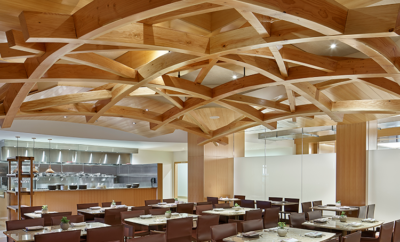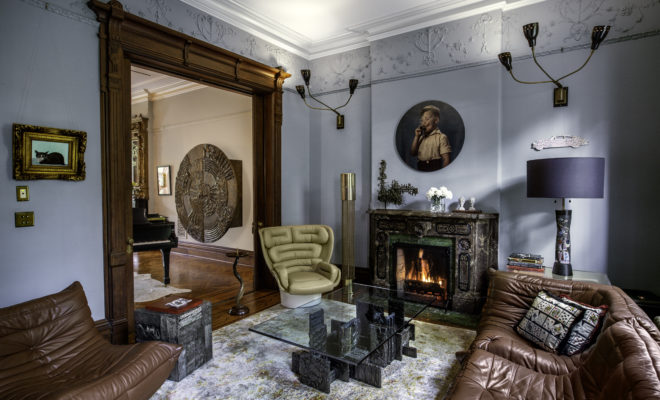 Photographs by Peter Ross
Photographs by Peter Ross
Design
Opposites Attract
WHEN MY HUSBAND AND I STARTED house hunting in Brooklyn eleven years ago, I had my heart set on an Italianate brownstone with crisp white rooms and rounded, chunky moldings. The idea was a vintage-yet-neutral backdrop for our rock-star-chic furniture of the 1960s and ’70s. But then we fell in love. We were pretty impressed the first time we toured “the mothball house,” as locals called it. This 1879 Clinton Hill town house was almost entirely intact—intricate bronze hinges and doorknobs, walnut doors and woodwork with burl inset panels, etched-glass doors, deep plaster crown moldings and ceiling medallions, and parquet floors with elaborate borders. Three of the slate fireplace mantels even retained their original faux-marble paint jobs.
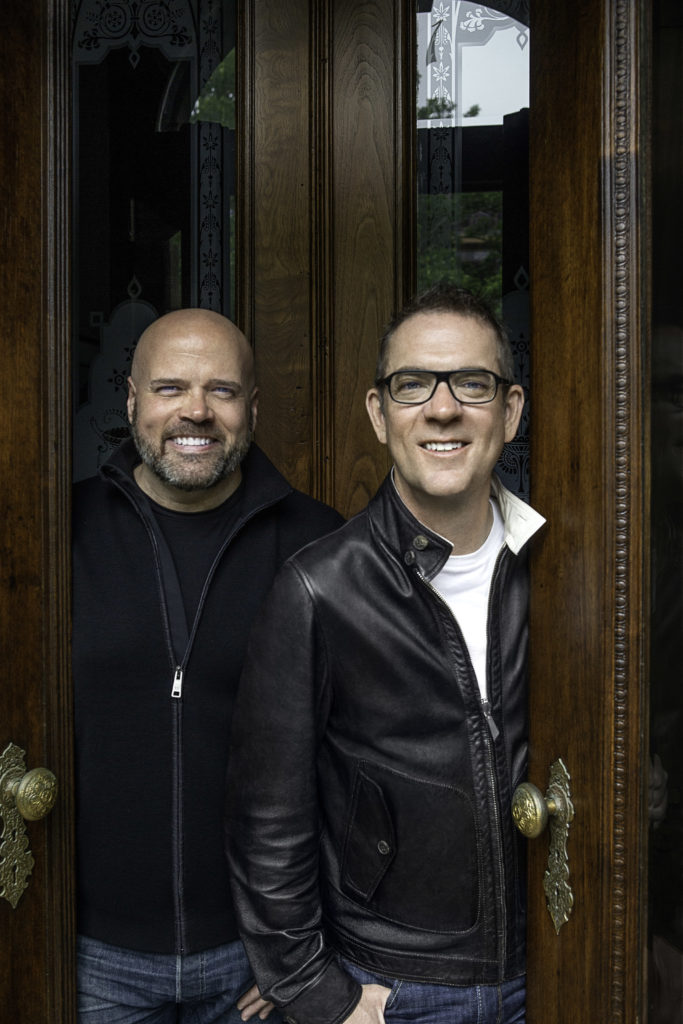
Homeowners Barry Rice and Ted Allen.
It was hardly the neutral backdrop I had dreamed of. But after touring dozens of wrecks with sloping floors and little original detail, this highly ornamented Neo-Grec stood out as the special home we were looking for—solid, full of character, and in dire need of help.
We moved in and worked with a friend and neighbor, architect Jarek Tresko, on renovation plans. After a year of preparation, we lived through two separate yearlong construction phases to replace the plumbing and electrical systems, add central air conditioning while preserving the vintage details, and install a professional-grade kitchen and modern bathrooms.
Almost nothing went untouched. We had the plaster walls reinforced with fiberglass mesh and skim coated; workers stripped layers of paint from the walnut casings and doors; we replaced the windows with period-correct replicas; the brownstone facade was restored; ironworkers painstakingly patched up the original wrought-iron fence with parts salvaged by previous owners when the neighbors’ fences gave up the ghost.
The renovation seemed as if it would never end. But after four years, we were finally ready to decorate!
Several years earlier, after a thirteen-year career in Chicago as a journalist and journalism professor, I had reinvented myself as a residential interior designer. This house would be my greatest challenge to date, as its ornate Victoriana provided, as I like to say, “a lot of look,” even before we furnished it. Strangely, I think it was our new home’s detail-packed backdrop that helped ignite my interest in the brutalist designs of the 1970s. The bold work of Pennsylvania artist Paul Evans, with its imposing, strong forms and intricate, hand-formed embellishments, delighted me when set against the raucous backdrop of the house. Sometimes, yes, less is more. And, sometimes, more is.
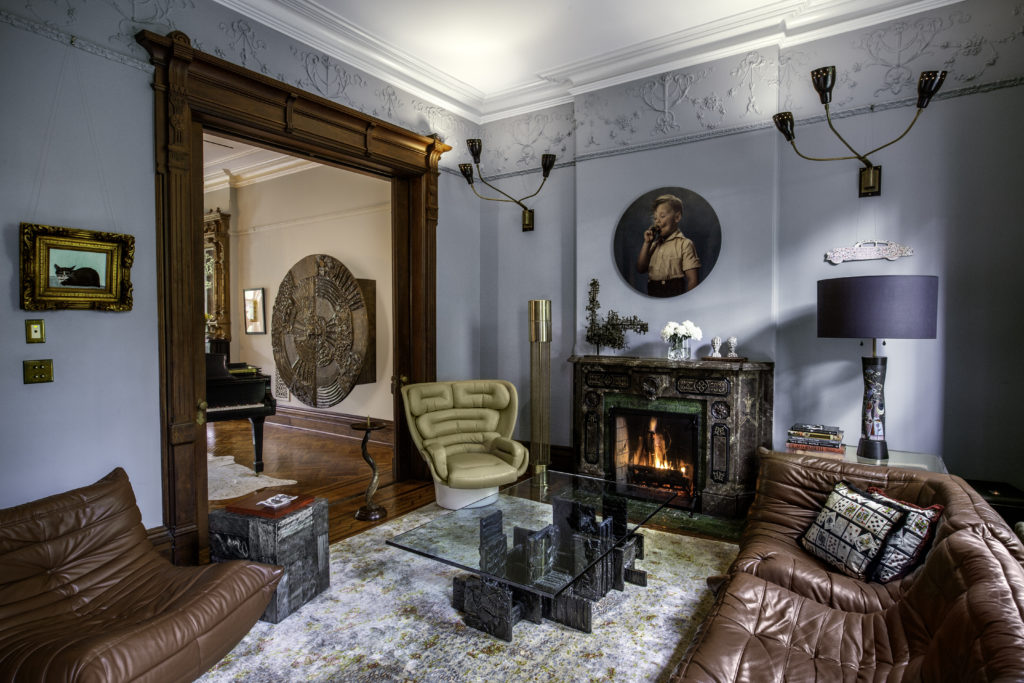
In the rear parlor, a 1970 Paul Evans sculpted bronze coffee table is complemented by Michel Ducaroy’s Togo seating for Ligne Roset, designed in 1973, and a Joe Colombo Elda chair, 1960s. Monumental 1950s Italian sconces, a 1970s Pierre Cardin floor lamp, and a 1950s Marcello Fantoni table lamp illuminate the room. Frieke Janssens’s 2011 photograph The Gasper hangs above the fireplace. Beyond the pocket doors, the homeowners’ prized 1973 Paul Evans Disc bar can be seen next to a Steinway piano in the front parlor.
I had always wanted a Paul Evans Disc bar—a rare signature piece from his body of work. I finally won one of the six-foot-diameter monsters at an auction in Michigan, after being outbid on several occasions. Its mammoth circular doors now dominate our front parlor and conceal a worrisome collection of sipping tequilas and vintage glassware.
We started looking at the Evans market more closely. Next: a heavy, steel-door Deep Relief cabinet for our master bedroom; glass-topped sculpted bronze dining and coffee tables; a studio-made patchwork side table; and various glitzy pieces from the designer’s blockbuster Cityscape line for Directional Furniture. I deeply appreciate Evans’s philosophy of furniture as sculpture with function.
To serve as a counterpoint to the brutalism, I was drawn to the work of German-born furniture designer Karl Springer, whose pieces also have a sculptural quality but with much more restraint. They feature clean, bold lines, luxurious materials and finishes, and a phenomenal quality of construction rare in today’s world of disposable furniture. We have a curvaceous Springer lacquered-goatskin bed in our master bedroom, and Soufflé ottomans and a cantilevered Sculpture Leg table in our front parlor.
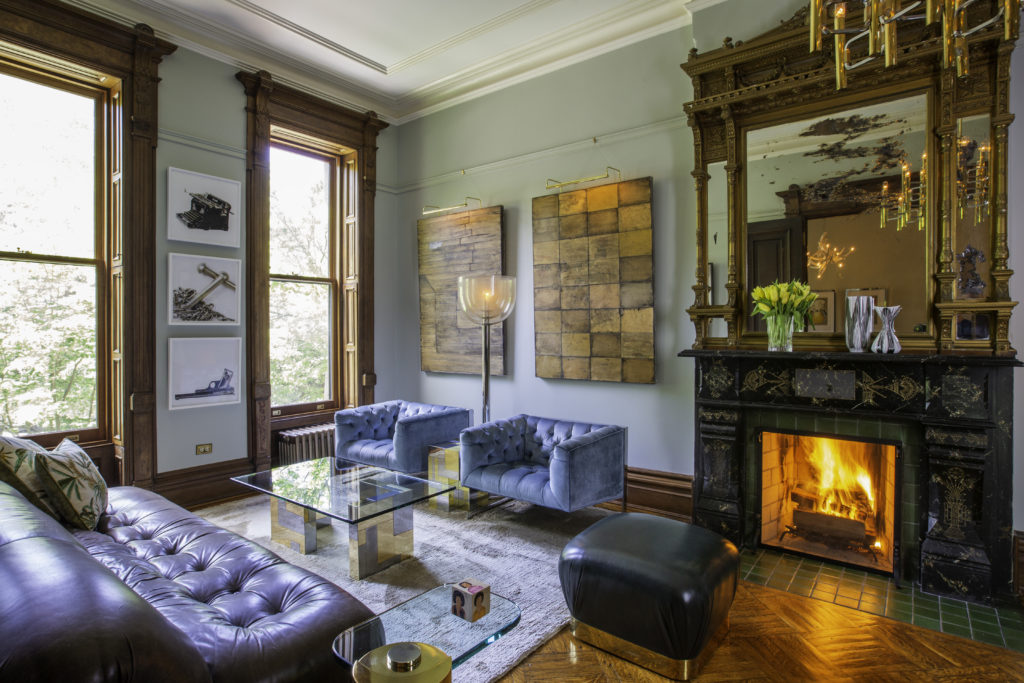
The front parlor contains c. 1970s Milo Baughman tufted lounge chairs and a c. 1960s Tobia Scarpa Soriana sofa, along with a Cityscape side table, c. 1970s, by Paul Evans and a Sculpture Leg table, c. 1980, by Karl Springer. Also by Springer is a rolling Soufflé ottoman, c. 1980s. Photographs by Peter Ross of writer and artist William Burroughs’s possessions, 2010, line the walls, along with two painted collages by Brazilian artist Ulisses Bahia, 2005.
You can see my love of Italian design sprinkled among the Evans and Springer pieces: a Joe Colombo Elda chair; a Pulegoso glass floor lamp by Carlo Nason for Mazzega; a goblet-shaped dry bar clad in goatskin by Aldo Tura; many pieces of pottery as well as brutalist metal sculptures by Marcello Fantoni.
Five years ago, with longtime friend Roger Ward, I opened the shop Full Circle Modern in the Greenpoint neighborhood of Brooklyn. We began channeling our mutual vintage design obsessions, and as we assembled the store’s inventory of glittery furniture and lighting, I was inspired to fine-tune my own collection. New inventory that piqued my interest would find its way into our home, as displaced chairs, lamps, and tables found themselves for sale. It’s a good system. Our home became a design laboratory, a place for experimentation, and a gallery where we could curate and display our collection.
I can’t help it: Every once in a while something that enters the showroom finds a place in our hearts—and our house. I’m a collector. I do this for work because I’d be doing it anyway— obsessively and voraciously—for myself.
And, by the way—there’s much to be said for “a lot of look.”
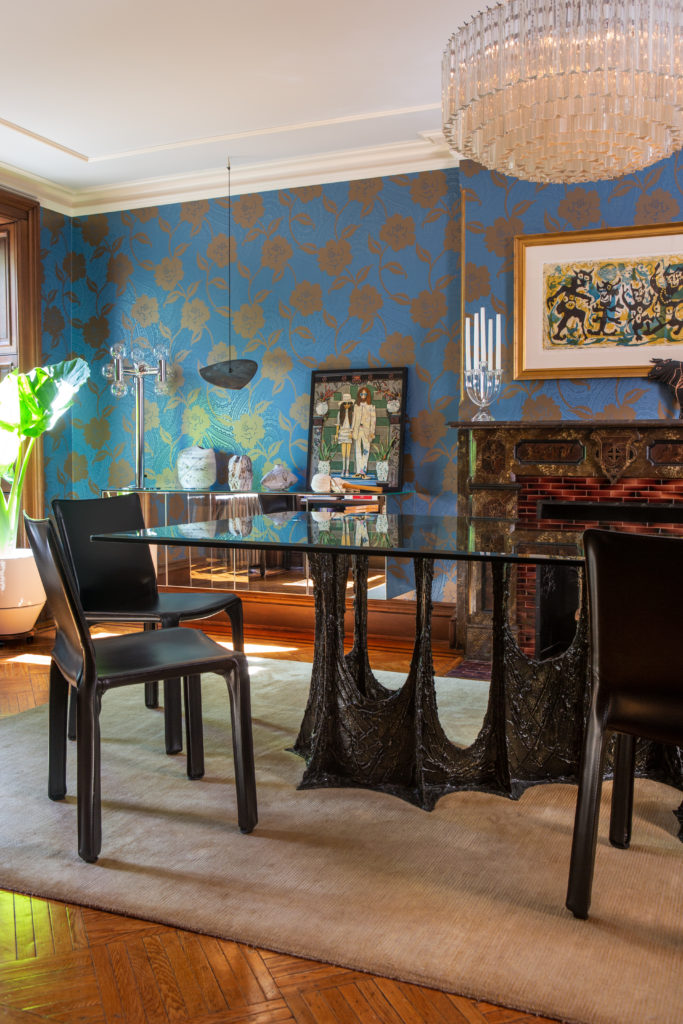
In the dining room, Mario Bellini Cab chairs, designed in 1977, surround an Evans sculpted bronze Stalagmite dining table, 1970. The Murano glass chandelier is by Venini, c. 1970s, and the rug was designed by Rice himself and woven in Nepal.



